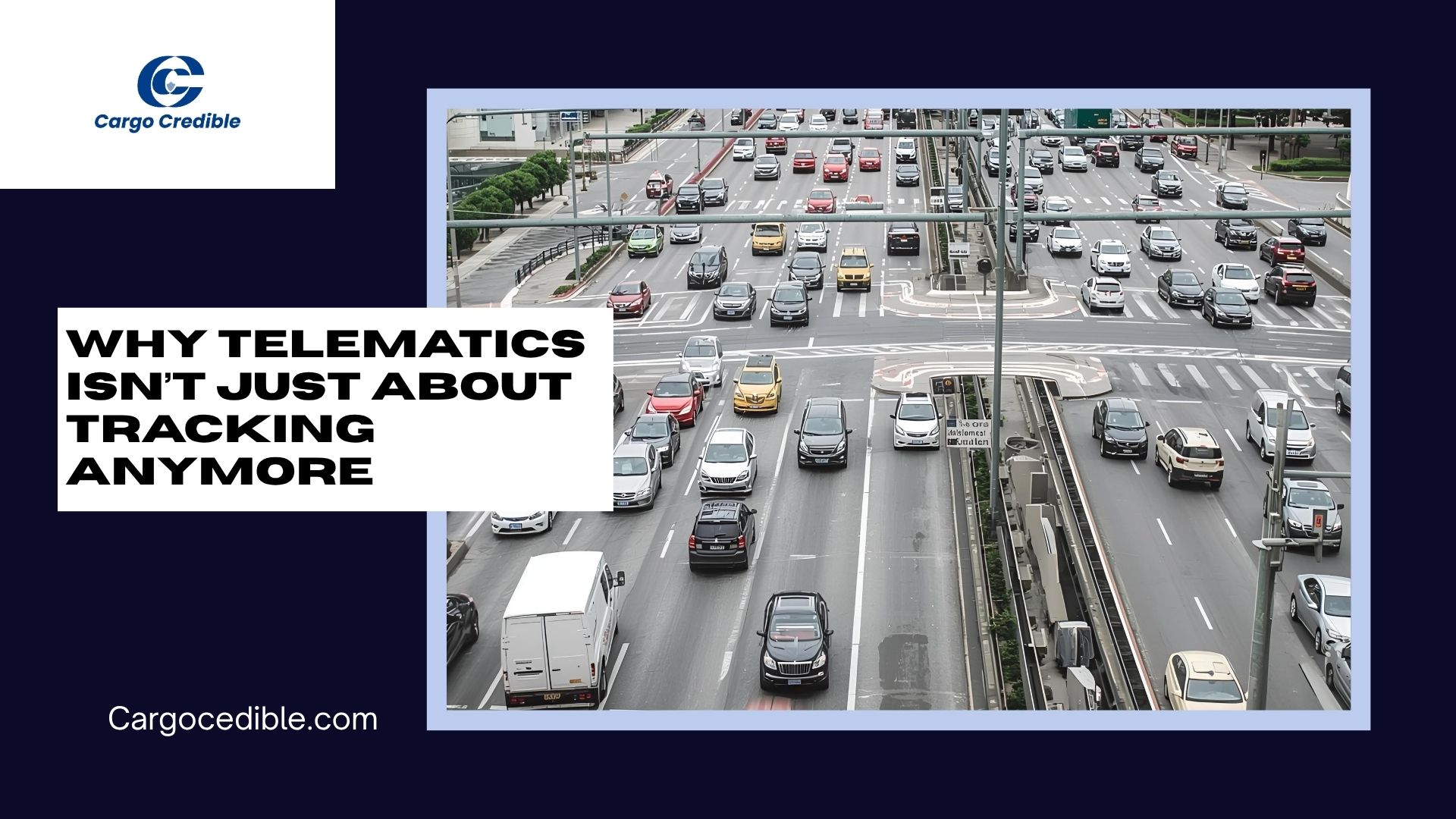Why Telematics Isn’t Just About Tracking Anymore: The Quiet Tech Revolution in Trucking

For many years, telematics in trucking meant a simple thing: tracking. A small device inside a truck would send its location to a dispatcher’s screen—a blinking dot on a digital map showing, “Here’s your truck.” This helped fleets know where their trucks were and let customers estimate delivery times. But telematics today is nothing like that straightforward tracking system. It has grown into a complex, intelligent platform that talks to fleet managers and drivers, delivering insights that transform every part of trucking operations.
From Blinking Dot to Smart Systems
Old telematics systems answered “Where is my truck?” Today’s telematics systems answer far bigger questions:
- How healthy is the truck?
- How efficient is the driver?
- How can routes save fuel?
- When should maintenance happen before breakdowns occur?
This is the quiet technology revolution reshaping trucking from the inside out—no flashy headlines, no futuristic hype—simply smarter, safer, and more fuel-efficient trucks on the road every day.
1. Predictive Maintenance — Fix It Before It Breaks
In the past, fleet maintenance was a rough guess based on mileage or after a breakdown. Telemetrics changed that by constantly monitoring hundreds of engine and vehicle details. Sensors collect data on everything: engine temperature, brake wear, oil pressure, tire condition, and more. Advanced telematics systems analyze this data with smart algorithms to predict when a part will soon fail. Instead of surprise breakdowns on remote highways, managers get early alerts like:
“Truck #57’s battery health is declining with a 90% chance of failure within 30 days—schedule replacement at next stop.”
This lets fleets plan repairs conveniently, reducing unexpected downtime, cutting emergency repair costs, and keeping trucks running reliably. Think of it like a health tracker for your vehicle, constantly scanning and warning before problems become emergencies.
2. Fuel Optimization — Saving Every Drop
Fuel is one of the largest expenses for trucking companies. Simple changes in behavior and routing can save thousands of dollars each year per truck. Modern telematics systems offer detailed fuel use insights by observing:
- Idling time at stops
- Driver acceleration and braking patterns
- Route inclines and traffic delays
- Tire pressure and engine load
By analyzing this information in real time, these systems guide drivers to more efficient habits and suggest routes that balance shortest distance with fuel efficiency. Reports show which drivers use less fuel in identical conditions, creating opportunities to reward good driving and coach others. The outcome means trucks sip fuel instead of gulping it, delivering significant cost savings and reducing environmental impact.
3. Driver Behavior Insights — From Surveillance to Support
At one time, telematics data made drivers feel like they were under constant surveillance, leading to mistrust and anxiety. Today, the approach has shifted dramatically to coaching and collaboration. Telematics tracks:
- Speed control
- Hard braking and rapid acceleration
- Sharp cornering
- Compliance with safety protocols
Rather than punitive monitoring, fleet managers use this data to support drivers with personalized feedback and training sessions. Dash cam videos paired with telematics can illustrate real situations to coach safer maneuvers and reduce accident risks. This change improves morale, keeps drivers safer, and helps fleets reduce insurance costs.
4. The Bigger Picture — Smarter Fleets, Smoother Operations
When vehicle condition, fuel use, and driver behavior data combine in an integrated dashboard, fleet managers gain powerful decision-making tools. They can:
- Plan optimal vehicle replacement schedules based on actual wear
- Choose routes for max fuel efficiency and timely delivery
- Lower emissions to meet sustainability goals
- Allocate resources proactively to minimize downtime
This real-time, data-driven oversight transforms fleet management from guesswork into precision operations.
5. The Quiet Revolution — Transforming Trucking Today
While headlines focus on futuristic ideas like autonomous trucks and drone deliveries, the real revolution is quietly underway in trucking yards and highways worldwide. It’s the evolution and widespread adoption of smart telematics, making current trucks smarter, safer, and more efficient without fanfare. This revolution impacts every part of trucking, directly benefiting drivers, mechanics, dispatchers, and company owners today—not some distant future vision.
Telematics is the Nervous System of Modern Trucking
Telematics no longer stands for just a blinking dot on a digital map. It is the complex nervous system of trucking: connecting machines, drivers, and managers with continuous, meaningful data. This network transforms raw information into intelligent decisions, turning fleets into agile, cost-effective, and sustainable businesses. The next time you see a big rig on the road, remember: it’s not just moving freight. It’s part of a quiet technological revolution, one data point at a time. Are you ready to listen?
Comments (0)
- No comments yet.